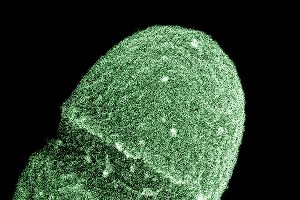RESEARCH: Enterococcus faecalis pops up during pork processing

Canadian researchers have published a study assessing the antimicrobial resistance and virulence of genotypes of Enterococcus faecalis, taken from samples taken from a commercial pork processing plant. They conclude that the pork meat appears to be arriving at the plant free of E. faecalis, suggesting that contamination occurs during processing.
The objective of the study was to assess the antimicrobial resistance and virulence genotypes of Enterococcus faecalis isolated from samples obtained from a commercial pork processing plant.
Method
A total of 200 samples were randomly obtained from carcasses after bleeding (BC; 50 samples) and pasteurization (PC; 100 samples) and from retail pork products (RP; 50 samples). One isolate from each E. faecalis -positive sample was analyzed for antimicrobial susceptibility and characterized using a enterococcal microarray for analysis of resistance and virulence genes.
E. faecalis was isolated from 79.5% of BC samples, 2% of PC samples, and 72.7% of RP samples.
Results
Resistance to the clinically important drugs ciprofloxacin (one isolate each from BC and RP samples) and daptomycin (one isolate each from PC and RP samples) was found. Multiresistance (to five or more antimicrobials) was more common in E. faecalis isolates from BC (77.4% of isolates) samples than those from PC (25%) and RP (37.6%) samples. Resistance to kanamycin (43.5%) and streptomycin (69.2%) was noted mostly in E. faecalis from BC samples.
The most common resistance genes (>5% prevalence) found in E. faecalis were those for aminoglycosides (aac(6), aphA3, and aadE), macrolides-lincosamide (ermB, ermA, sat(4), and linB), and tetracyclines (tetL, tetM, and tetO ). The virulence genes expressing adhesion (ace, efaAfs, and agrBfs), gelatinase (gelE), and pheromone (cAM, ccF10, cob, and cpd1) factors were found in the majority of isolates.
Conclusions
Significant associations were found between resistance and virulence genes, suggesting their possible relationship.
These data suggest that carcasses entering the final product processing area are mostly free of E. faecalis but are recontaminated with antimicrobial-resistant strains during processing. The source of these contaminants remains to be identified; however, these results underscore the importance of E. faecalis as a reservoir of resistance and virulence genes.
Source: Journal of Food Protection











